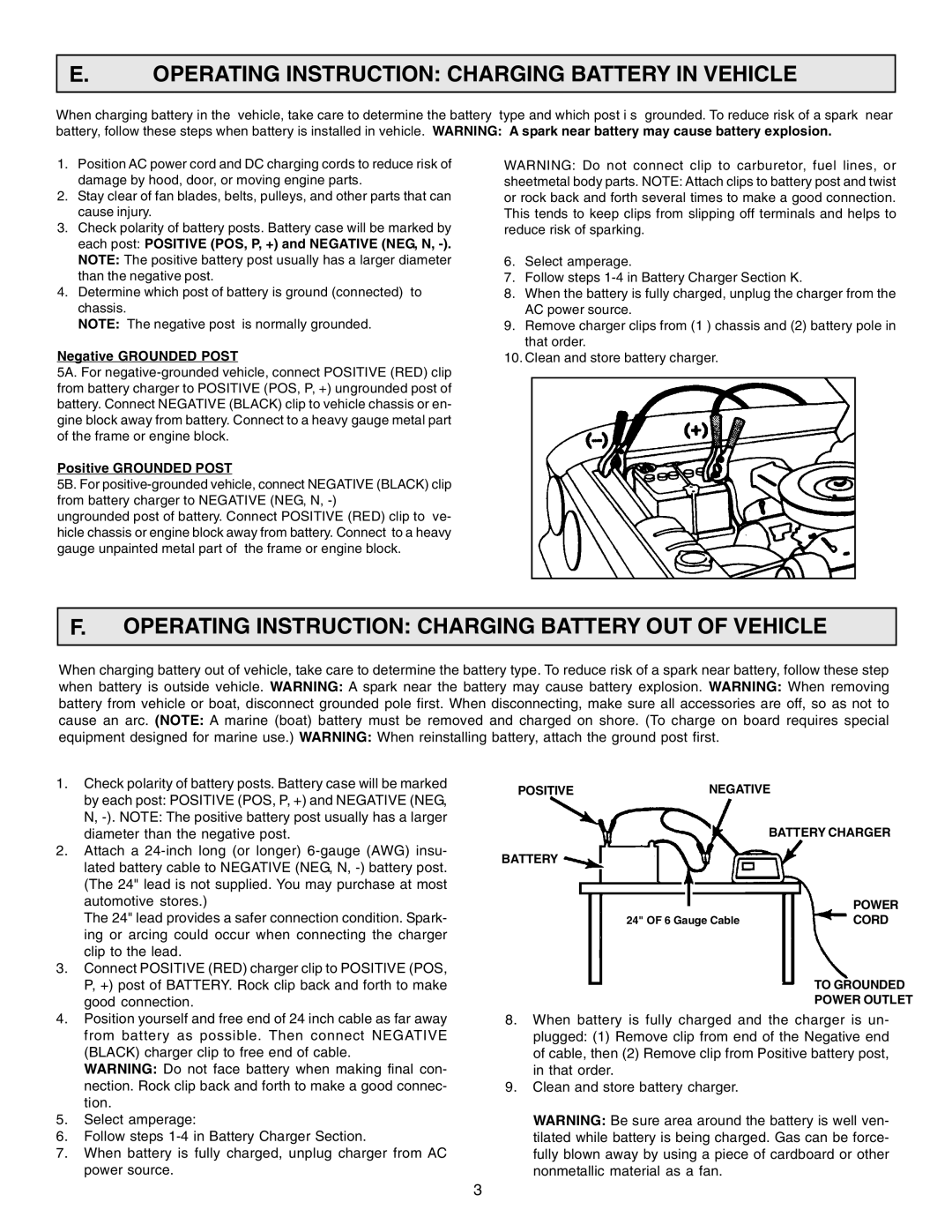SE-1010-2, SE-1250, SE-1010-2, SE-1012D, SE-1052, SE-1250 specifications
Schumacher has long been recognized for its innovative battery chargers and no line exemplifies this tradition better than the SE series. The SE-1250, SE-1010-2, SE-1012D, and SE-1052 models showcase a blend of technology, efficiency, and user-friendly features that cater to both professional and personal use.Starting with the SE-1250, this charger offers a powerful 12V output, making it ideal for charging various batteries, including automotive and marine. One of its standout features is the automatic shut-off function, which prevents overcharging and extends battery life. The robust construction and clear LED indicators ensure users remain informed of the charging status.
The SE-1010-2 is another noteworthy model, known for its dual 6V/12V capability. This flexibility allows users to cater to a wider range of battery types. The multi-stage charging process enhances battery health and lifespan, optimizing the charging cycle. Additionally, the compact design facilitates easy transport, making it a suitable option for both home use and on-the-go applications.
The SE-1012D introduces a smart microprocessor-controlled system, which monitors the charging process and adapts the necessary charge according to battery needs. This ensures efficient battery maintenance, reducing the risk of damage. The built-in safety features, such as reverse polarity protection and short circuit prevention, enhance its usability in a diverse range of settings.
The SE-1052 model emphasizes versatility and adaptability with its advanced charging algorithms. This model supports not only standard lead-acid batteries but also AGM (Absorbent Glass Mat) and gel batteries, proving its efficacy across multiple applications. The digital display offers real-time information on voltage, charging time, and battery status, amplifying user experience.
Each model in the Schumacher SE line bears the hallmark of reliability and quality. Their rugged build and intelligent features make them invaluable tools for maintaining battery health, ensuring that users can always count on their devices when needed. Emphasizing safety, efficiency, and versatility, the SE series represents Schumacher's commitment to excellence in battery management technology. Whether for personal or professional use, these chargers offer the technological advancements and robust characteristics necessary for modern battery care.

